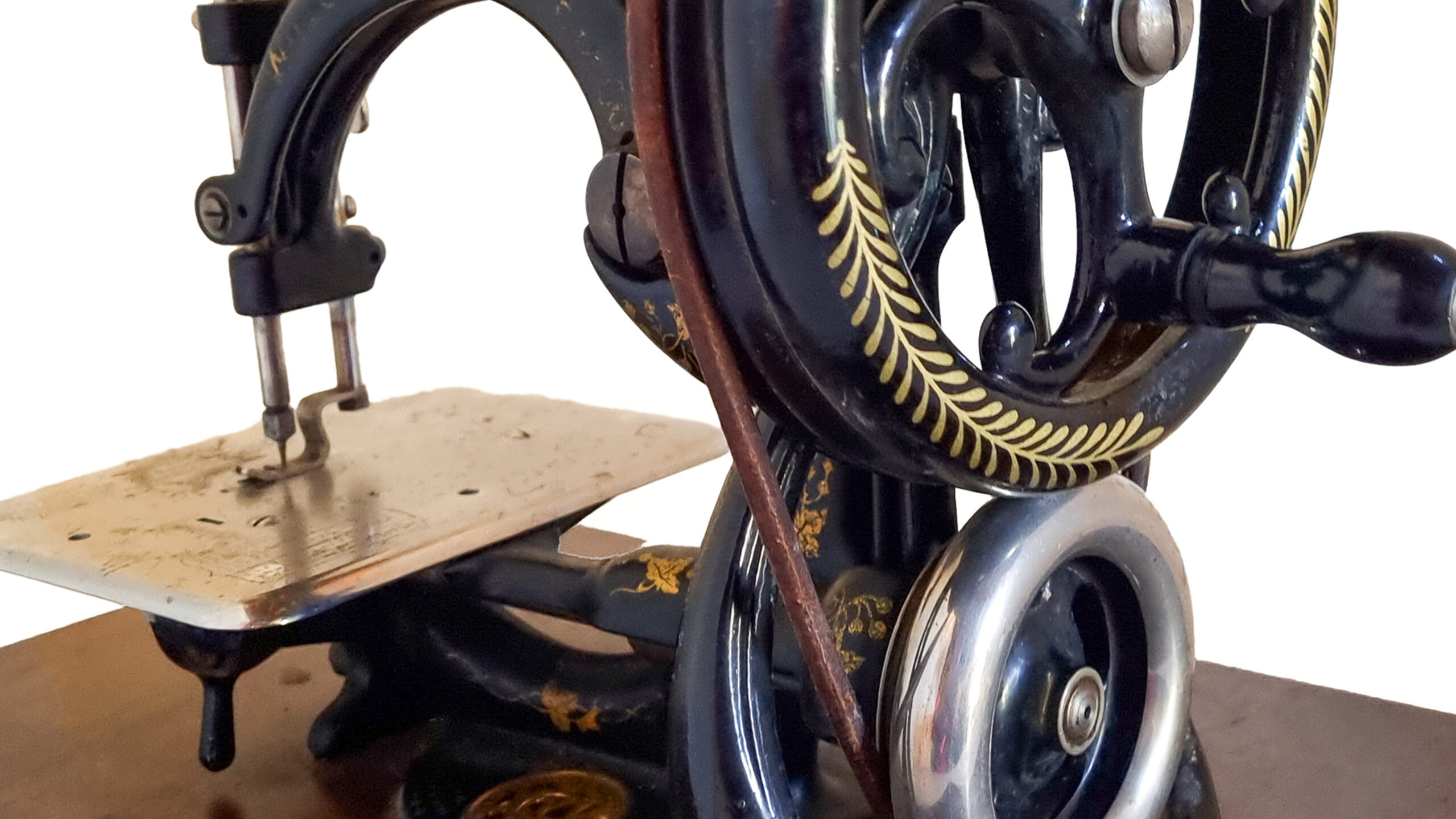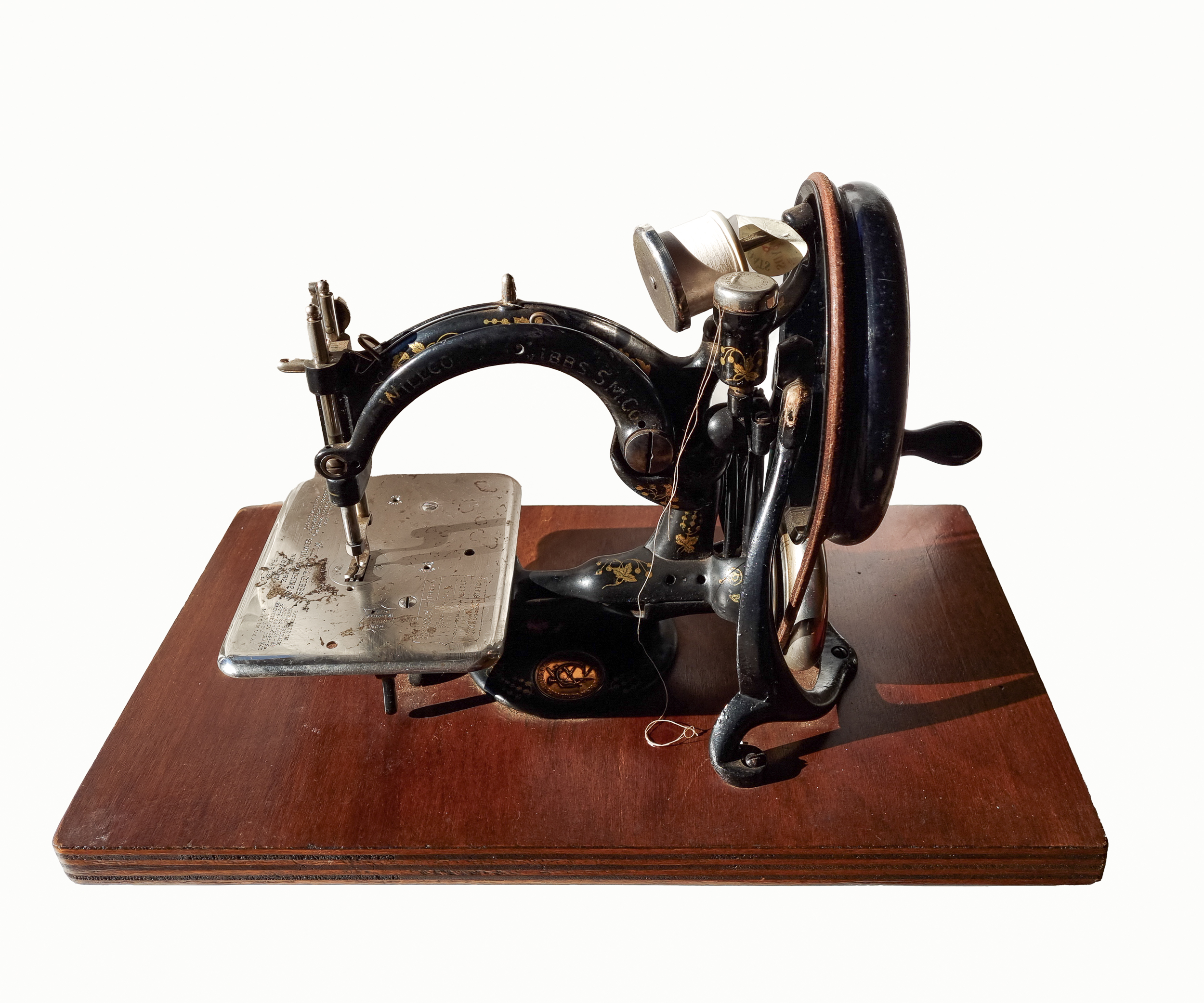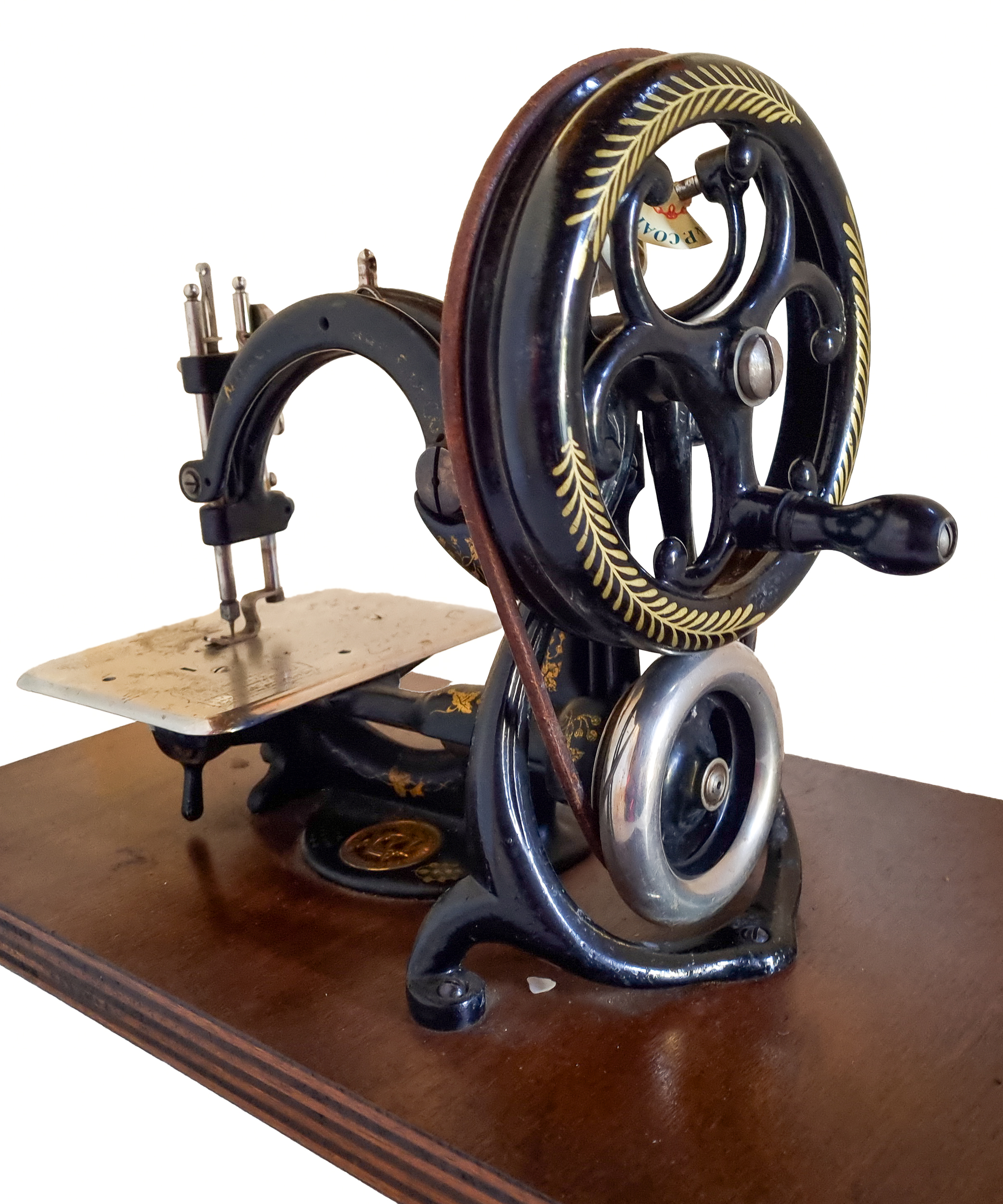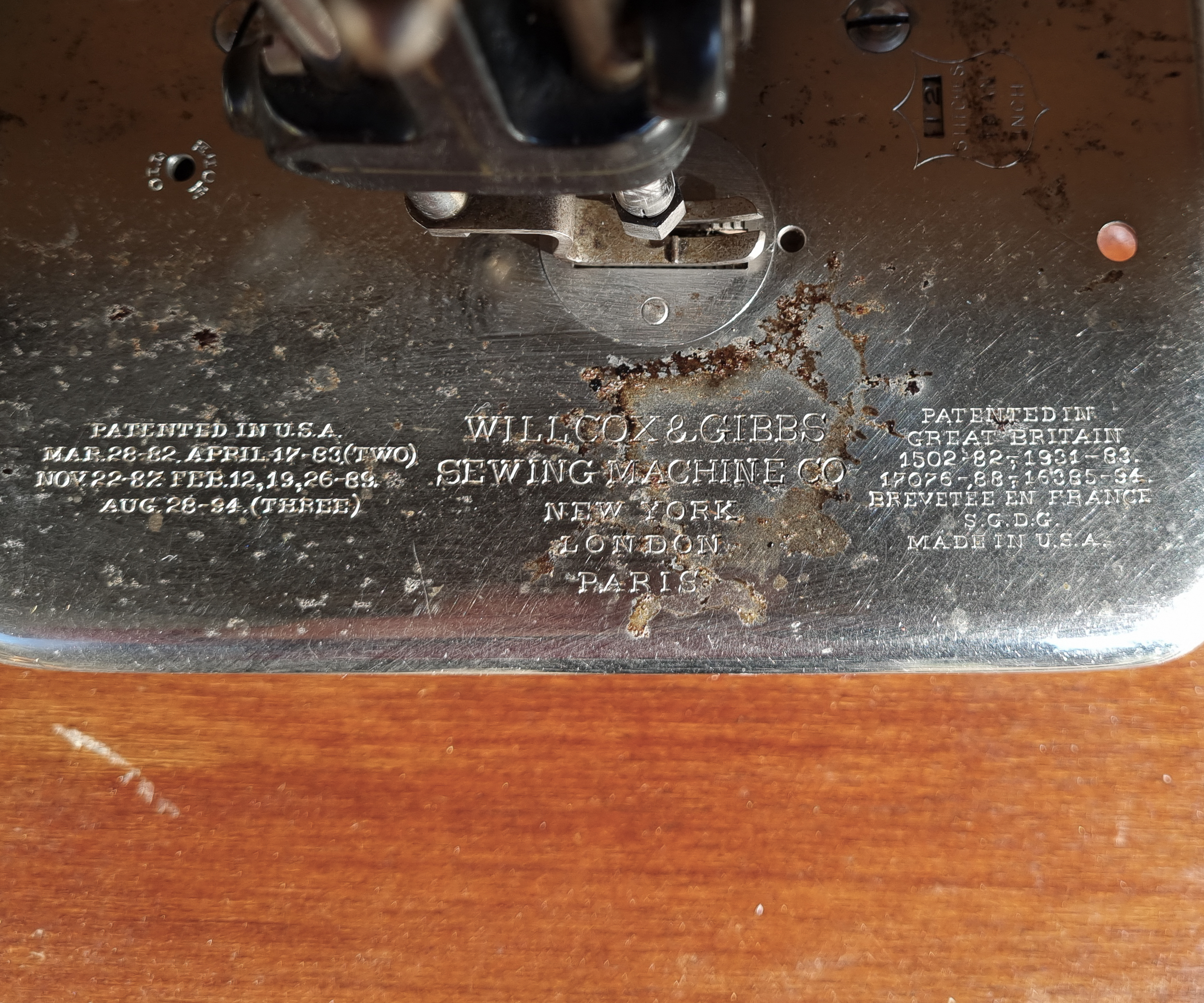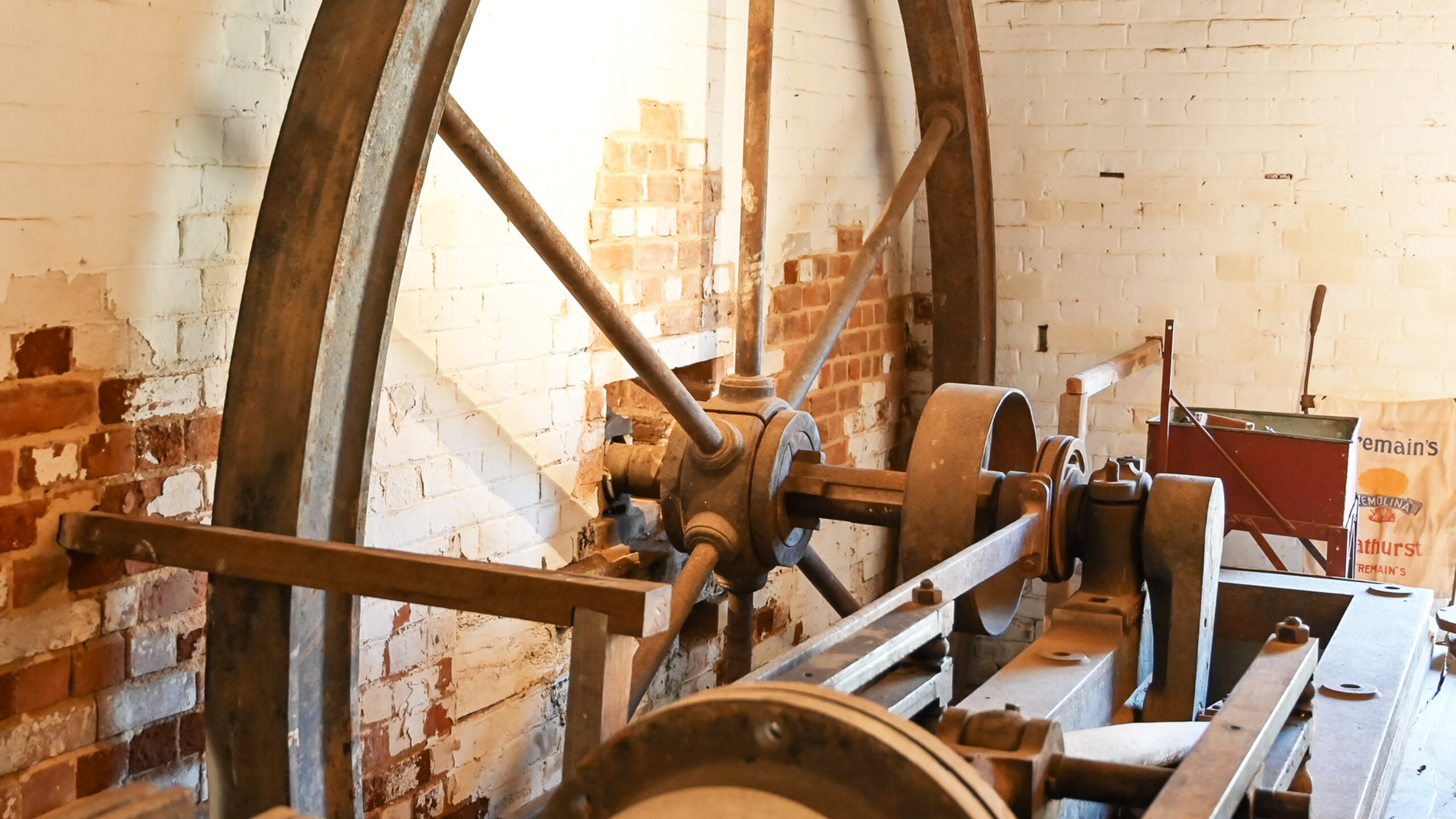Battle of the Machines
Willcox and Gibbs Vs. Singer
Most people if asked to name an old sewing machine would automatically name Singer. Yet it was the Willcox and Gibbs chainstitch machine, such as this one, that dominated the market until the late nineteenth century. These very elegant machines, advertised as the Silent Automatic, were cheap to buy and run. The lack of a bobbin meant less thread was used, they were silent and for a long time were the only sewing machines with automatic tension and stitch indicator.
In 1873 Samuel Hebblewhite of Sydney, boasted that 6,000 Australian families owned the only sewing machine that could be relied upon, a Willcox and Gibbs. Although other sewing machines, such as Singer and Beale and Company were available Willcox and Gibbs dominated the rapidly expanding market until the early 1890s. This dominance was based on availability and price with a Willcox and Gibbs costing £10 in 1865 against a Singer from £14 to £35.
As the price differential narrowed the Silent Automatic began to lose market share especially to Singer. To counter Singer’s growth distributers of the Silent Automatic such as E. Webb and Company of Bathurst highlighted its lack of ‘discordant sounds’ arguing that it was the only machine that could be used without serious risk to health. However, this was not sufficient to convince the public as by 1895 Singer dominated sewing machine sales.
This Willcox and Gibbs chainstitch machine showcases the level of precision engineering and elegance of design achieved in the nineteenth century. Its loss of market dominance and subsequent removal from the public consciousness demonstrates in turn the power and influence of marketing in an expanding consumer market.


